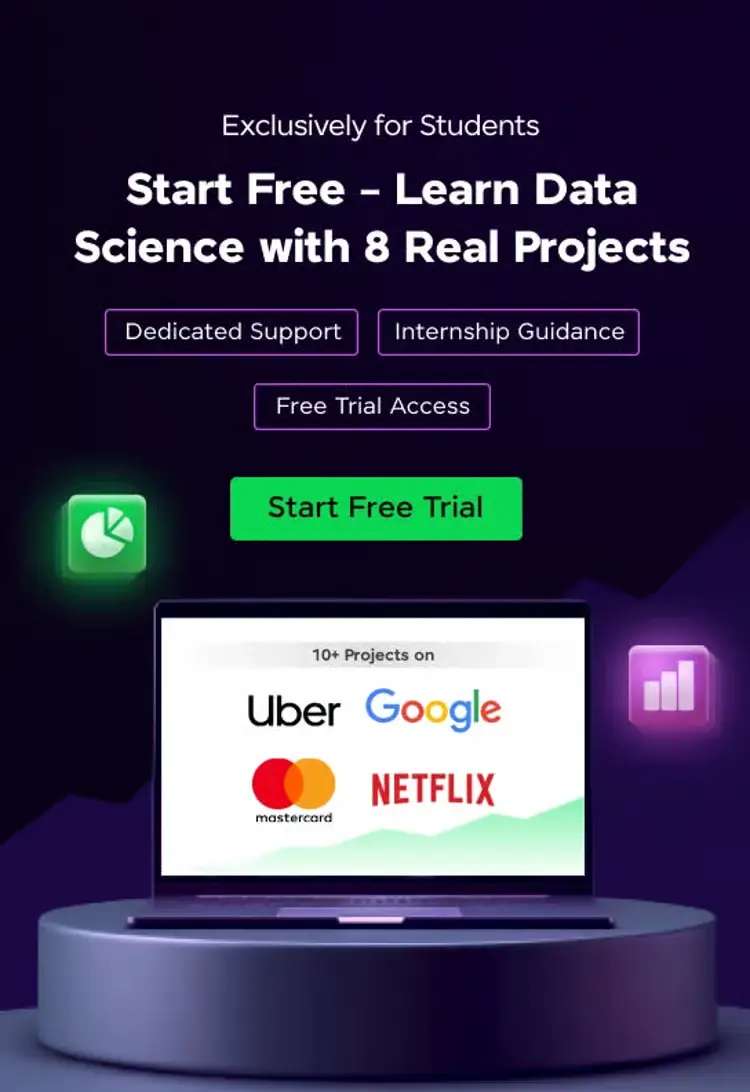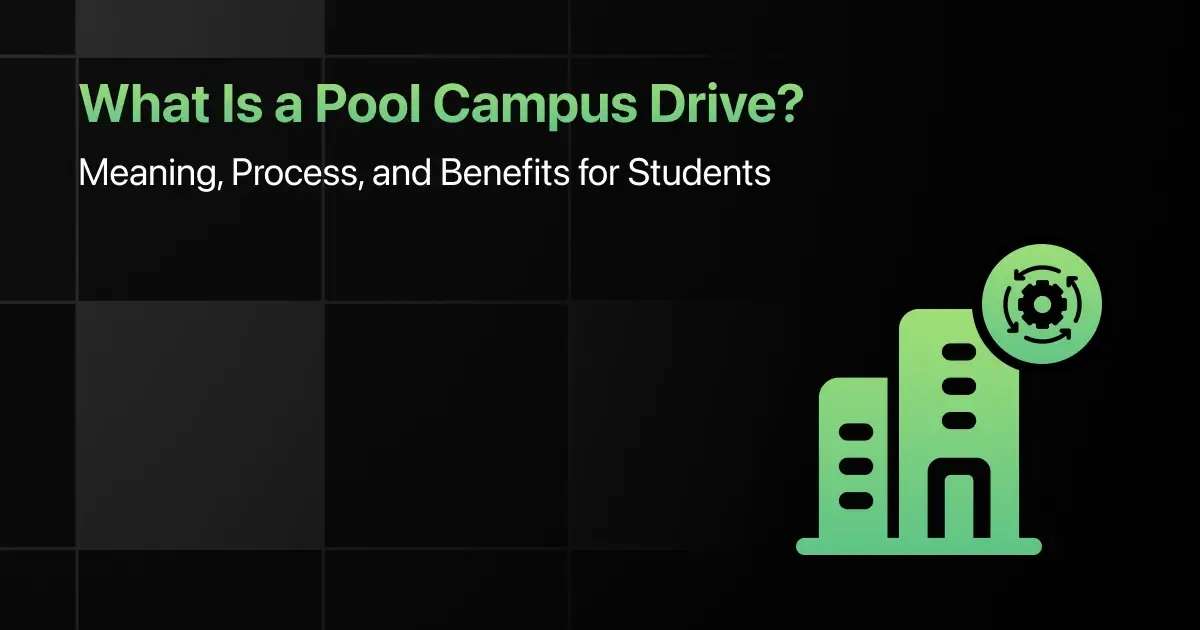What is the Difference between CV and Resume
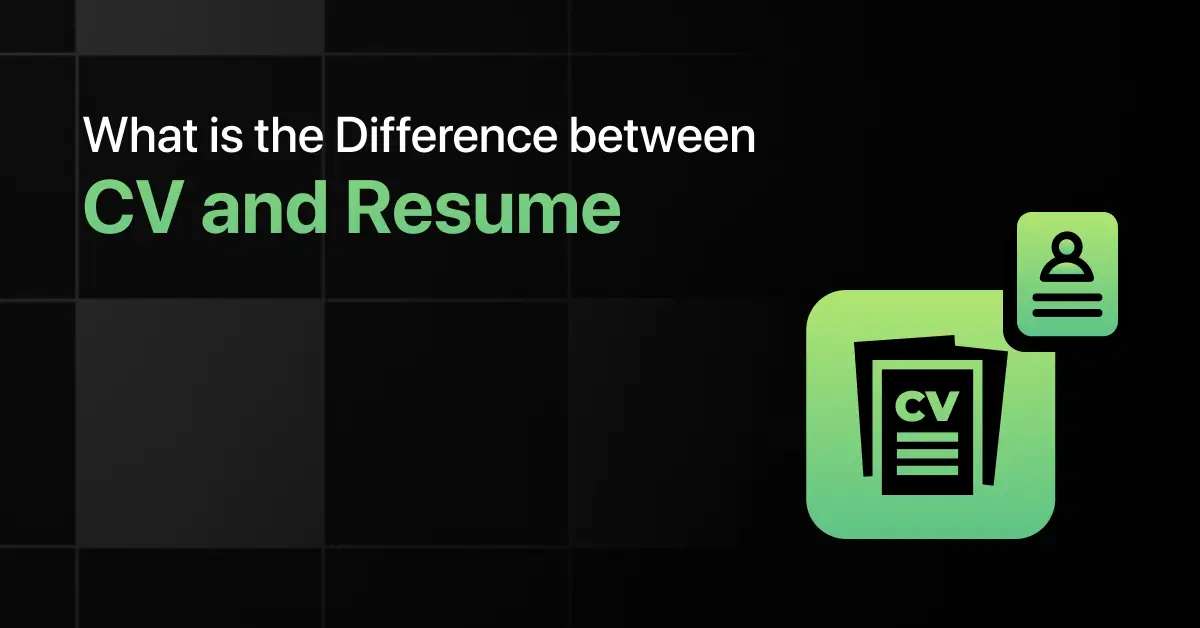
Many candidates preparing for placements or job applications often wonder: “Are CV and resume the same?” This confusion led job seekers to face rejection or miss valuable opportunities. Especially, freshers who don’t even know that there is a difference between CV and resume, submit lengthy Curriculum Vitae (CVs) filled with unnecessary details, when recruiters actually need a short resume that presents only relevant skills and achievements. The primary difference between a CV and a resume lies in their length, purpose, level of detail, and usage across various regions.
By understanding CV and resume difference better, you can easily avoid common mistakes and improve your chances of getting shortlisted. This guide will clear all your doubts with a simple explanation, 10 differences between CV and resume, and even a CV vs resume sample for clarity.
Check out a blog ‘How to Build a Winning UI/UX Designer Resume’ to see exactly how to structure your resume for maximum impact, even if you’re fresh out of college.
What is a CV?
CVs are the default hiring document in professional settings across Europe, Africa, and parts of Asia. Curriculum Vitae (CV) is a career timeline that goes beyond listing skills.
It presents the information where you’ve worked, what you’ve achieved, studied, researched, or published. This information makes them longer and more detailed than resumes, often running into several pages.
Full Form: Curriculum Vitae (“course of life” in Latin).
Length: 2–10+ pages, which depends on experience.
Purpose: A complete record of academic and professional achievements.
Content Includes:
- Contact information
- Career summary/objective
- Key skills
- Professional experience (brief, achievement-oriented)
- Education (summarized)
- Certifications (relevant only)
- Achievements/projects (if directly job-related)
Usage: Preferred in Europe, the Middle East, Africa, and academic/research roles worldwide.
Example: If you are applying for a teaching post abroad, a Curriculum Vitae vs a Resume matters because universities always demand a CV.
What is a Resume?
Resumes serve the standard requirement for job applications, especially for freshers, entry-level positions, and private companies in India and most corporate sectors globally.
Recruiters don’t want to see every exam you’ve passed since school; they just want to know why you’re the right fit for their particular role. That’s why resumes are created short, targeted, and customizable to the specific job requirements.
Meaning: A resume is a summary/brief of qualifications, achievements, job impact, and skills.
Length: Maximum 1 to 2 pages.
Purpose: To get the candidate’s most relevant skills and achievements for a specific job requirement in a job hunt by recruiters.
Content Includes:
- Contact information
- Career summary/objective
- Key skills
- Professional experience (brief, achievement-oriented)
- Education (summarized)
- Certifications (relevant only)
- Achievements/projects (if directly job-related)
Usage: Preferred in India, the USA, Canada, and corporate/private-sector jobs globally.
Example: A fresher applying for an IT role should highlight coding languages, hackathons, and certifications in the resume. If you mistakenly send a CV here, it shows you didn’t understand the difference between resume and curriculum vitae.
Want to create a job-winning resume in just a few minutes? Check out the list of the best free online resume builders that can save you time.
10 Differences between CV and Resume
Here’s CV vs resume sample comparison table that answers ‘what is the difference between CV and resume?’ that every fresher must know:
| Aspect | CV (Curriculam Vitae) | Resume |
|---|---|---|
| Length | 2-10+ pages | 1-2 pages |
| Content Depth | Academic history, research, publications, conference, awards | Relevant skills, experience, achievements, job impact |
| Focus | Education, research, detailed roles | Skills, achievements, job relevance |
| Purpose | To present the full career journey | To highlight job-specific strengths |
| Customization | Rarely customized | Highly customized per job |
| Usage By Region | Europe, South Africa, Worldwide | US, Canada, India, Corporate Sectors |
| Review Time | Longer Review | 6-7 seconds scan by recruiters |
| Timeframe Covered | Entire Career | Last 5 - 10 Years |
| Design | Simple, text-heavy | Modern, ATS friendly |
| Detail Level | Exhaustive | Concise |
This table makes the CV or resume difference very clear for freshers.
What does a CV and a Resume Look Like
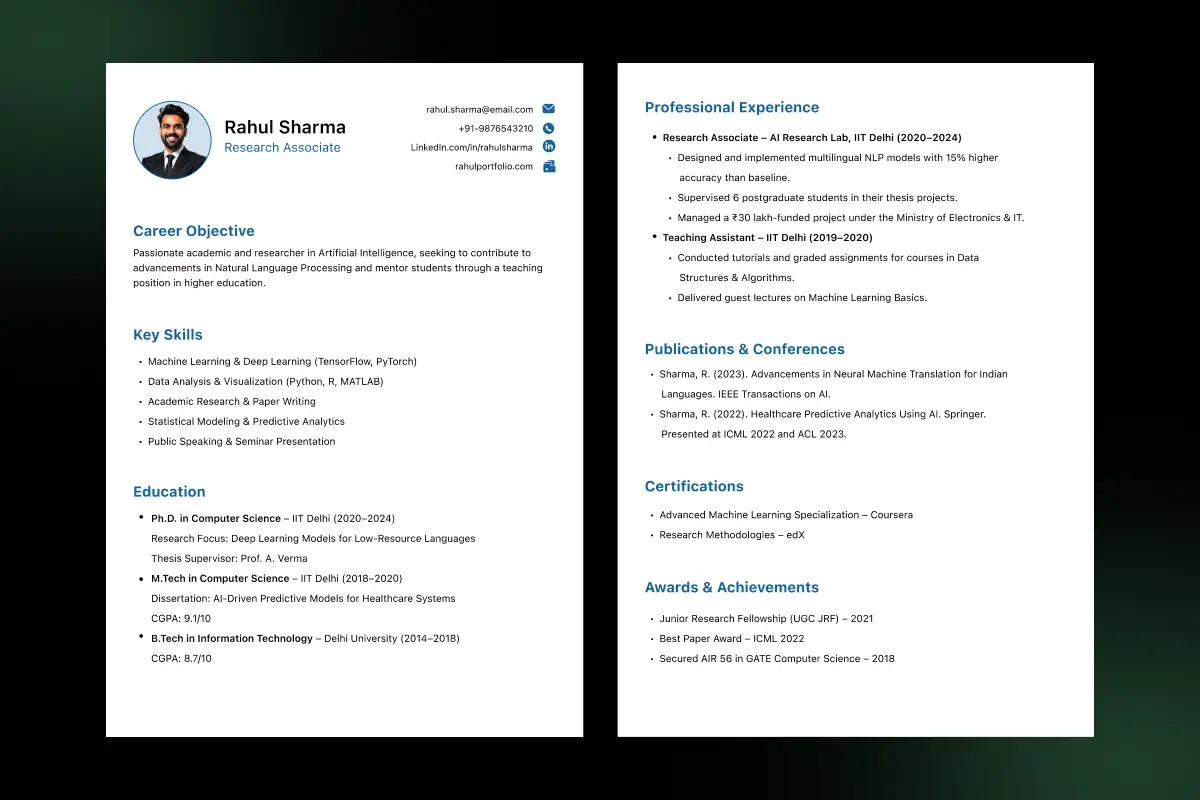
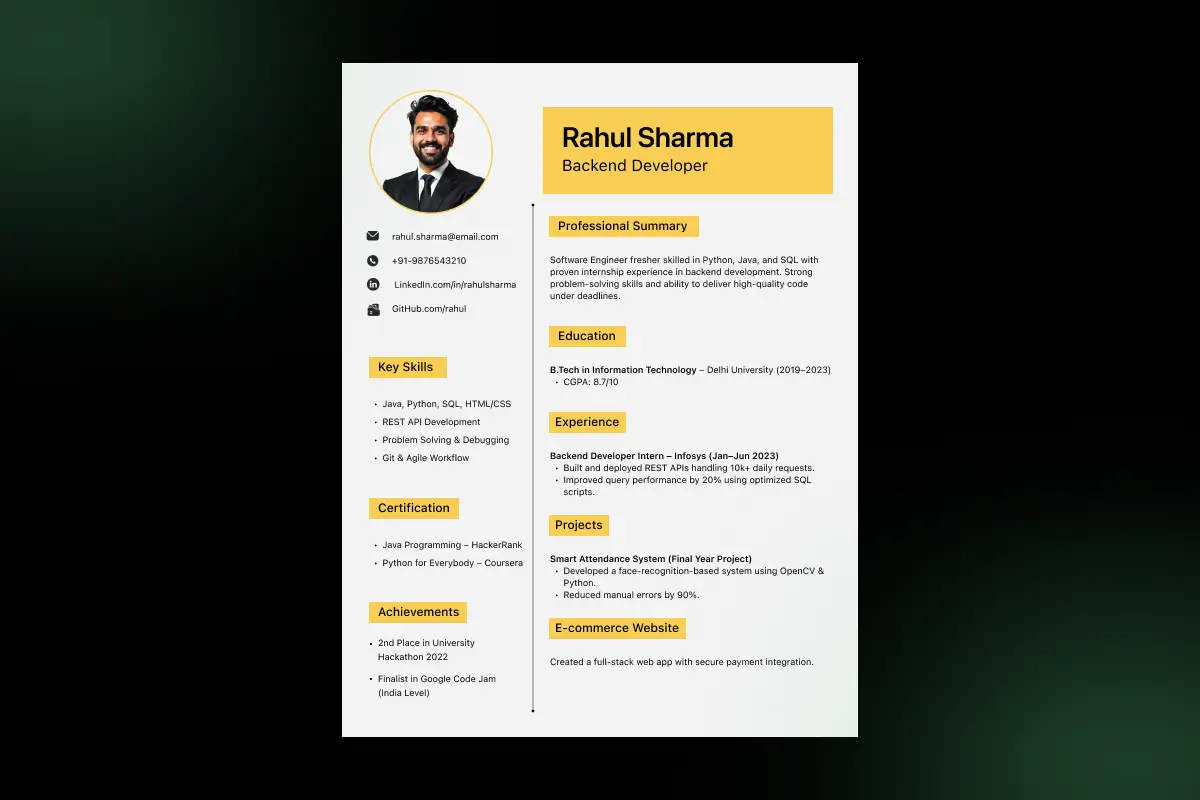


Tips for Writing a Strong CV or Resume
- Keep formatting clean and professional.
- Highlight achievements with quantifiable results.
- Use strong action verbs (e.g., led, created, developed).
- Customize for each job application.
- Avoid spelling and grammatical mistakes.
- Ensure ATS (Applicant Tracking System) compatibility.
- Use bullet points for readability.
- Highlight achievements with numbers (e.g., “Improved sales by 20%”).
- Use keywords from the job description.
Want detailed role-specific tips? Read 10 Useful Tips to Build Your Professional Data Engineer Resume for expert guidance on content, layout, and what recruiters look for.
Choose the Right Document for Your Career
If you’re applying for placements, fresher jobs, or corporate roles, choose a resume that is short, tailored, and ATS-friendly. If you’re aiming for research, higher studies, or academic positions abroad, prepare a CV.
With HCL GUVI’s free Resume Builder, you can create a job-ready resume in minutes and explore resume tips for placements to increase your chances of landing your dream job role.
To practice and prepare effectively, you can explore the best websites for placement papers that offer a wide range of solved papers and mock tests
Final Words
Your talent is valuable, but it needs the right presentation. A resume gets you noticed in seconds; a CV builds your academic credibility over time.
Knowing CV and resume differences, when to use a CV, and when to use a resume is a career-defining skill. Use the right one at the right time, and you’ll always stay ahead in the job market.
Frequently Asked Questions
1. What is the difference between CV and resume?
A CV is detailed and comprehensive, while a resume is concise and job-focused.
2. Which is more detailed, a CV or a resume?
A CV is more detailed and can run into several pages, unlike a resume.
3. When should you use a CV instead of a resume?
Use a CV for academic, research, or international job applications.
4. Do companies prefer resumes over CVs in India?
Yes, in India, resumes are the standard for placements and corporate jobs.
5. Should freshers stick to resumes instead of CVs for placements?
Yes, resumes are preferred as they highlight skills and achievements in a concise/short format.
6. Are CVs and resumes used differently across countries?
Yes, CVs are most common in Europe and academia, while resumes are standard in India, the US, and Canada.
7. How can HCL GUVI help in creating an effective resume?
HCL GUVI has free tools and expert guidance to help you create an ATS-friendly, professional resume in minutes.
Explore More Resume Articles
Related Posts


Soft Skills Training for College Students: Key Topics & Activities
Are you feeling out of your element preparing for campus placements in India? While there is plenty of discussion about …


